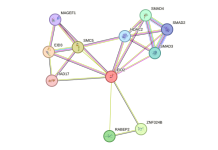If a person could die of embarrassment, flatulence might rank with the world’s deadliest diseases. Then you should take care of Flatulence and Gas Treatments as early as possible. Fortunately, the condition rarely signals a serious health problem. And often just a few simple changes in your diet will keep it under control. Throughout the day all of us pass intestinal gas or flatus, to use the Latin term. Where does it come from?
Many foods and beverages are chock-full of gas. Apples and pears, for example, consist of 20 percent gas. And think of all the gas-charged carbonated drinks you consume. Whipped toppings also contain lots of trapped gases.
But the great majority of flatulence is produced by bacteria in the large intestine. That’s right, bacteria. Few realize it, but vast colonies of bacteria live out their lives inside people’s large intestines. These bacteria are helpful for the most part since they feast on foods your own digestive system can’t break down on its own-everything from the artificial sweetener in that low-cal dessert you devoured last night to fibers from fruits, vegetables, beans, and grains.
Inevitably, when intestinal bacteria digest these foods, they produce methane as a byproduct. You already know the name of the process: fermentation. The same bacterial reaction creates those tiny bubbles in beer and wine. Just how much gas these intestinal bacteria produce depends on what you’ve eaten lately, of course.
If you’ve wolfed down a couple of bean burritos, the intestinal bacteria will enjoy a feast. However, if you ate a juicy salmon steak, the same bacteria will most certainly go hungry, what’s the difference? Your own system can’t digest fiber in the burritos. So the task gets delegated to your intestinal bacteria. On the other hand, most people readily digest the fats and proteins in salmon.
Turning Off the Gasworks
Relatively little was known about just how much flatulence could be considered normal until a study came out in the June 1991 issue of the medical journal, Gut. People in the study were fed a diet of beans. Then the amount of gas they produced was measured. It totaled about a quart a day on average.
Since then, other studies have shown that people pass gas about 14 times during the course of a day. Some people pass gas far more frequently. In fact, 30 percent of Americans experience excess intestinal according to Steven Peikin, M.D., professor of gastroenterology at the Robert Wood Johnson Medical School at Camden, in New Jersey. Dr. Peikin has designed special diets to treat intestinal ailments.
The consequences-besides embarrassment- include pain and bloating. As a cure, Dr. Peikin suggests cutting out some of the more common gas-producing foods from your diet and changing them to serve certain foods. As you’ll see, these ways you cook or flatus-producing foods fall into some wide-ranging categories.
Consider Food Additives
Olestra and other fat substitutes cut down on calories because your body can’t digest them. The same goes for artificial sweeteners such as sorbitol. Once again, the job goes to the intestinal bacteria. If either artificial fats or artificial sweeteners give you a problem, consider eliminating them from your diet.
Don’t Let Milk Get You
Do you feel bloated and gassy hours after you’ve had a cup of milk or a double-cheese pizza? You may have lactose intolerance-meaning that your body just can’t digest the sugary substance called lactose found in all dairy products.
Fortunately, plenty of lactose-free dairy products are available in supermarkets and health-food stores, and other products such as Lactaid contain the enzyme needed to fully digest lactose and let you enjoy dairy without discomfort. (See “Lactose Intolerance,” which begins on page 225, for ways you can modify your diet.)
Deal with Wheat
About six in 10,000 people have difficulty digesting gluten, a protein found in wheat products. Gas is just one symptom. Consult a physician if you believe you have a gluten intolerance.
Review your Vegetables
Prime culprits in the veggie category include broccoli, Brussels sprouts, cabbage, cauliflower, kale, onions, peas, radishes, and turnips. All contain indigestible fibers, which the lower intestinal bacteria love to feast on. These same vegetables also contain sulfur. And sulfur mixed with methane causes odor problems. Cooking draws out some sulfur.
If raw versions of some of these vegetables cause issues, opt for cooked dishes instead. Also try using garlic, ginger, or nutmeg in cooking. The spices break down gas-causing ingredients.
Eat Fruit First
Certain fruits- particularly apples, apricots, bananas, blueberries, and pears-contain pectin, a fiber that intestinal bacteria love. Instead of serving fruit for dessert, start off the meal with fruit as an appetizer. That way, the pectin will be diluted by the other foods you eat.
Dealing with Fiber
Call it an ironic fact of nature, that beans, fruits, and vegetables are all foods that are most certainly good C. you should also create intestinally. You don’t want to give them may want to control your portions, advises Dr. Peikin, especially when you know that up to certain foods are apt to cause problems.
Still another way to fight gas is to eat more fiber-especially foods like whole-wheat bread and kinds of pasta, oat bran cereals, and, yes, vegetables and fruits. Wait a minute; don’t these high-fiber foods cause gas? The answer is yes, but a diet consistently high in fiber adds bulk to the undigested foods passed to the large intestine.
And that makes the large intestine quick to void these foods as waste. Since the food matter doesn’t hang around for long, the intestinal bacteria have less time to do their gas-causing work.
The key is to eat fiber consistently, Dr. Peikin explains. If you suddenly boost the fiber content of your diet from says 10 grams per day to 50 or more grams, your intestinal bacteria could become completely overwhelmed. Opt instead for the generally recommended amount between 20 and 35 grams per day.
How About Those Beans?
Of all the gas-causing foods that make up our diet, beans are probably the most notorious. Don’t blame the beans themselves, says Steven Peikin, M.D. professor of gastroenterology at the Robert Wood Johnson Medical School at Camden, in New Jersey.
Beans are an excellent source of protein. Instead, blame it on the bean skins, which contain carbohydrates you’re unable to digest. The stomach is your intestinal bacteria that are only too happy to do the job.
They break down these carbohydrates into sugars. And the process produces the foul-smelling that gas beans are so renowned for. One way to enjoy beans-at least the dried variety-while avoiding the gas is to soak them in water for 12 to 24 hours.
Soaking helps break down the carbohydrate skin. Be sure to rinse the beans thoroughly before cooking them. Beano, available in pharmacies and health-food stores, contains the enzyme alpha-galactosidase which digests bean skins before your intestinal bacteria get to them.
Unfortunately, alpha-galactosidase is destroyed by heat, so it can’t be added to recipes that require cooking or baking. Instead, spoon a couple of drops of Beano, which is flavorless, onto each serving of beans.
Which Foods Causing Flatulence?
You need to stay away from following problematic foods until the issue is resolved. East limited amounts of especially troublesome foods and maintain a consistent diet of 20 to 25 grams of fiber per day. Painful gas that persists for more than 24 hours or recurring bouts of gas can be a sign of more serious problems. Thus see your physician for diagnosis and treatment.
Apples, Apricots, Bananas, Beans and legumes, Blueberries, Broccoli, Brussels Sprouts, Cabbage, Cauliflower, Dairy Products, Food additives, Kale, Olestra, and other fat substitutes, Onions, pears, Peas, Radishes, Turnips.
The Good Foods
Bran and other fibrous grains, Rice, and Skinned potato are good for Flatulence and Gas Treatments.

Read More – Constipation – A Preventable Condition
Product You May Interest
-
Feel Emotional Freedom! Release Stress, Heal Your Heart, Master Your Mind
-
28-Day Keto Challenge
-
Get Your Customs Keto Diet Plan
-
A fascinating approach to wipe out anxiety disorders and cure them in just weeks, to become Anxiety free, relaxed, and happy.
-
Flavor Pairing Ritual Supercharges Women’s Metabolisms
-
The best Keto Diet Program
-
Boost Your Energy, Immune System, Sexual Function, Strength & Athletic Performance
-
Find Luxury & Designer Goods, Handbags & Clothes at or Below Wholesale
-
Unlock your Hip Flexors, which give you More Strength, Better Health, and All-Day Energy.
-
Cat Spraying No More – How to Stop Your Cat from Peeing Outside the Litter Box – Permanently.
-
Anti-aging nutritional unexplained weight gain, stubborn belly fat, and metabolic slowdown. Reach Your Desired Weight in a Week and Stay There.
-
Get All Your Healthy Superfoods In One Drink






